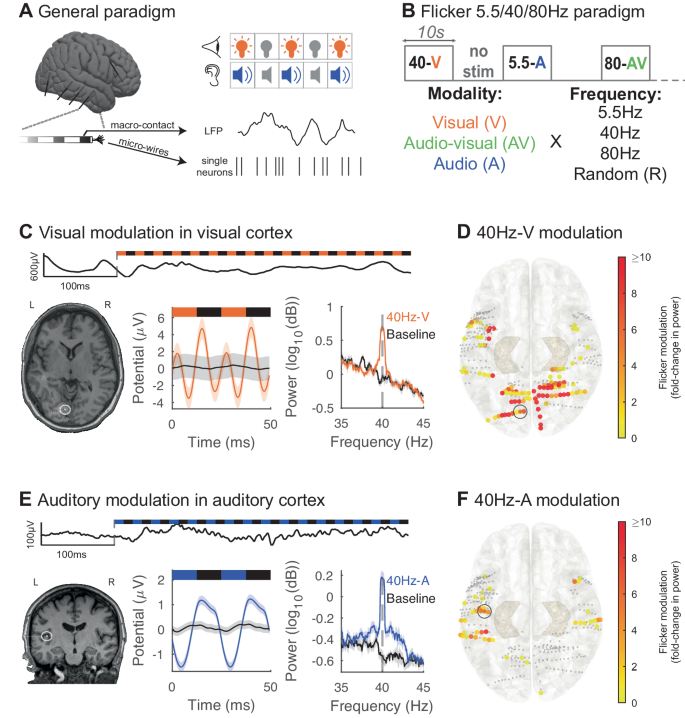2024-05-09 ジョージア工科大学
<関連情報>
- https://research.gatech.edu/flicker-stimulation-shines-clinical-trial-epilepsy
- https://www.nature.com/articles/s41467-024-47263-y
多感覚フリッカーは広範な脳内ネットワークを調節し、発作間てんかん様放電を減少させる Multisensory flicker modulates widespread brain networks and reduces interictal epileptiform discharges
Lou T. Blanpain,Eric R. Cole,Emily Chen,James K. Park,Michael Y. Walelign,Robert E. Gross,Brian T. Cabaniss,Jon T. Willie & Annabelle C. Singer
Nature Communications Published11 April 2024
DOIhttps://doi.org/10.1038/s41467-024-47263-y

Abstract
Modulating brain oscillations has strong therapeutic potential. Interventions that both non-invasively modulate deep brain structures and are practical for chronic daily home use are desirable for a variety of therapeutic applications. Repetitive audio-visual stimulation, or sensory flicker, is an accessible approach that modulates hippocampus in mice, but its effects in humans are poorly defined. We therefore quantified the neurophysiological effects of flicker with high spatiotemporal resolution in patients with focal epilepsy who underwent intracranial seizure monitoring. In this interventional trial (NCT04188834) with a cross-over design, subjects underwent different frequencies of flicker stimulation in the same recording session with the effect of sensory flicker exposure on local field potential (LFP) power and interictal epileptiform discharges (IEDs) as primary and secondary outcomes, respectively. Flicker focally modulated local field potentials in expected canonical sensory cortices but also in the medial temporal lobe and prefrontal cortex, likely via resonance of stimulated long-range circuits. Moreover, flicker decreased interictal epileptiform discharges, a pathological biomarker of epilepsy and degenerative diseases, most strongly in regions where potentials were flicker-modulated, especially the visual cortex and medial temporal lobe. This trial met the scientific goal and is now closed. Our findings reveal how multi-sensory stimulation may modulate cortical structures to mitigate pathological activity in humans.


